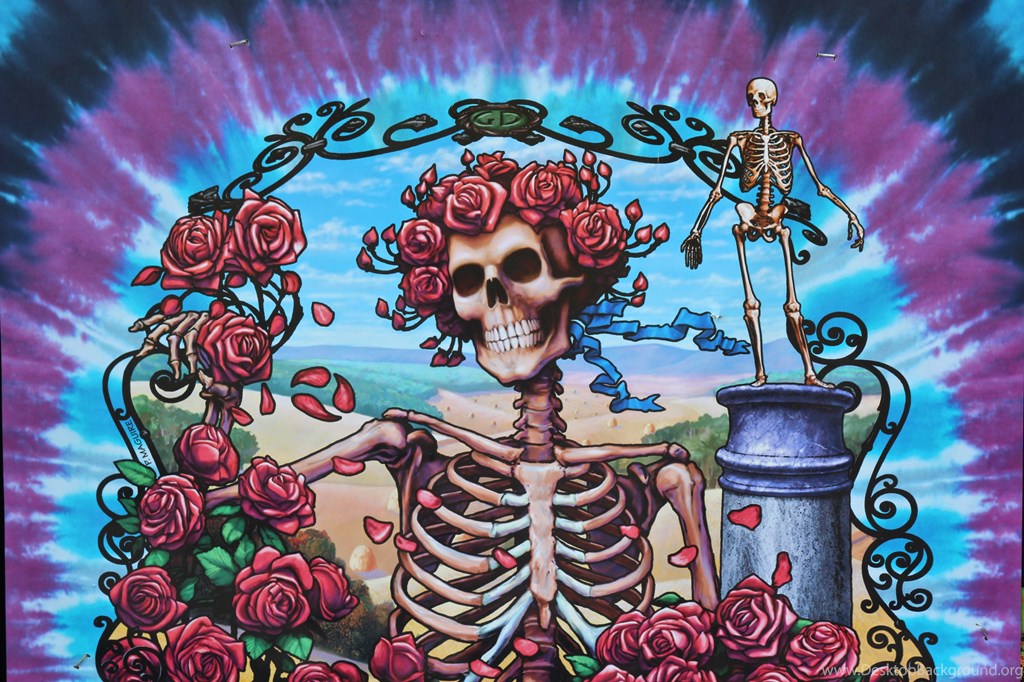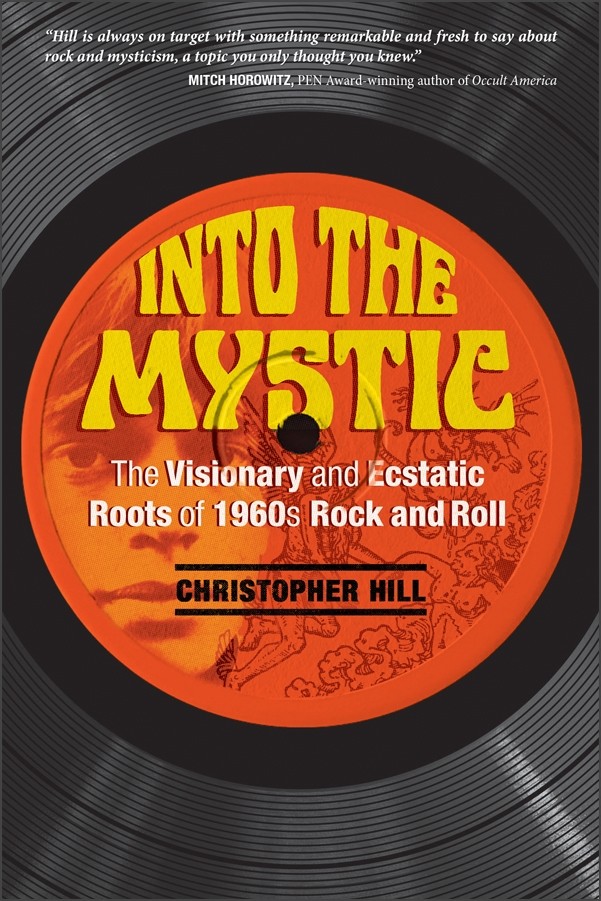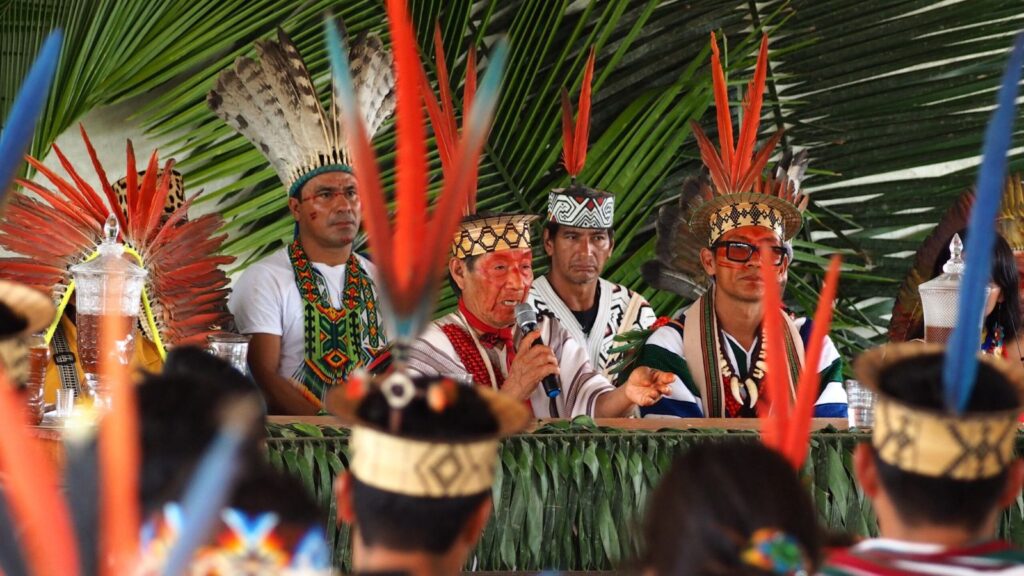The following essay is adapted from Into the Mystic: The Visionary and Ecstatic Roots of 1960s Rock and Roll by Christopher Hill, published by Inner Traditions.
There was something quixotic about it, absurd yet sort of noble, the musical expression of all the addled hopes for a psychedelic reformation, a song for a stoned crusade whose banners are tropical birds, but with some of the force of an army nonetheless.
Cultures around the world anchor their identities in sacred texts. Preserved physically or in memory, the texts serve to hold back incursions from the world that could overwhelm their traditions. For marginal American populations, separated by their work, race, religion, geography, or economic status from the larger society, the text was often their music. In the 1950s some young American intellectuals rediscovered this music and thought that they could use it in an analogous way, to resist absorption into the consensus culture. Their attitude toward the old music itself was mostly conservative. They wanted to protect and preserve it—not experiment with it, expand it, or transform it.
The Grateful Dead’s attitude toward American musical traditions was not simply a veneration of roots but an appreciation of roots for the new uses that could be made of them. Unlike the New York folkies, the Dead were not looking to the music for a politically useful past. For them the old music was a place where the profane time of contemporary America opened out into story, allowing room for imagination. The old music suggested things to them that that psychedelics affirmed and amplified.
Folk music for the frontiers of consciousness
People like the young members of the Grateful Dead were the next iteration of this retrieval of folk music, and they began to have drug-inflamed notions that they could extend the text and develop it. They would create a new folk music for the frontiers of consciousness. Because, like Bob Dylan, the future that they believed the traditional music implied was not “traditional” at all; rather the music implied and pointed toward a new kind of consciousness, a psychedelic way of seeing. They would move the folk tradition forward with their own original work to help build a culture that could sustain a new, rapidly expanding bohemia against the mass and weight of straight America. Their aim was not conservative but revolutionary and evangelical.
The old mountain song “Cold Rain and Snow” is a blues song that turns into a murder ballad, told from the point of view of a mistreated husband. The Dead, in making it into folk-rock on their first album, ignore the story line and break it up into its component images. In the Dead’s version “Well she’s coming down the stair, combin’ back her yellow hair” is not, as it was in the old song, part of a progress into resentment and murder, but an isolated icon-like image out of a mountain myth. The suggestion is that the culture of the rural poor is not just a record of hard times and exploitation, but sometimes one of visionary beauties too.
Entering mythic space
By the time they went to record their second album, Anthem of the Sun, elements were falling into place, beginning to form a distinct vision. The first three tracks (or side one of the LP) are electrifyingly exciting. They show the ambition and the reach of the new San Francisco music at its freshest. When the music of the Haight didn’t work, it lurched from one half-realized idea to another in a distracted haze, satisfied with its own far-outness. But when it worked as it does here, it really was a new kind of rock and roll. You maybe can’t spot the chug of Chuck Berry in a song like “Born Cross-Eyed,” but it bursts with exuberance and momentum just the same; the band is exhilarated by the new free space they’ve found to work in. The apocalyptic playfulness that the Grateful Dead suggested in “The Golden Road” on their first album finds full expression here.
This new space included broad tracts of the unconscious. Large and deep things were elbowing their way into the music, archetypal images and mythic patterns. Those first three tracks of Anthem are a kind of suite that suggests the sacrificial pattern that our culture knows best as the Christ story, beginning in “That’s It for the Other One” with a haunting, nursery-rhyme Calvary: (Garcia: “I think it’s an extension of my own personal symbology for ‘The Man of Constant Sorrow’—the old folk song—which I always thought of as being a sort of Christ parable.”)
The other day they waited, the sky was dark and faded;
solemnly they stated,
“He has to die, you know he has to die.”
And all the children learning, from books that they
were burning, every leaf was turning
To watch him die, you know he had to die.
This is followed by a descent into a psychedelic hell and resurrection in a lyrical aubade.
The Dead were getting a purchase on something. They had quickly passed, if they had even noticed, the stage of simple psychedelic effects. Before long, their trips were taking them near to the rattling engine house of the cosmos, Allen Ginsberg’s “starry dynamo,” the generator of images and myths. They began to develop a recognizable sensibility, greatly aided by lyricist Robert Hunter, a kaleidoscopic jumble of myth and story that included not only mystery and wonder but also a sort of weathered cosmic humor.
There was also an elusive evocative quality to the Dead’s sixties music. It was elusive because it was not exactly evocative of the past, like traditional folk music. You could say it was evocative of the future. Not a science-fiction technological future, but a mythic future. The notion that the future was going to be as haunting and compelling as the mythology of the past, that the future was going to be the myths realized. The Dead’s achievement was not on the scale of William Blake’s, but there was a Blakean sense to it that it was the stirring of ancient energies that were creating the revolutionary present. The New Age is in some ways a very old idea.
Aoxomoxoa: The acid pinnacle
In the working title of their third album, the Dead gave this new territory of theirs a name—“earthquake country,” tales from an unstable frontier zone (much like California) that was as unmistakably the Dead’s imaginative homeland as Penny Lane was the Beatles’. By the time of its release the title had become the palindromic Aoxomoxoa. Recorded from September 1968 to March 1969, Aoxomoxoa is one of the definitive expressions of the psychedelic imagination, of the Dead’s ability beyond other musicians of the time to depict what happens to the image-making function of the mind in the psychedelic experience. And they accomplished this not through long trance-inducing jams and studio effects but through the medium, mostly, of concise and satisfying—sometimes even rocking—songs.
Aoxomoxoa is a little scary, or if it doesn’t unsettle you a bit, you may not really be getting the vibe. Everything about Aoxomoxoa—every sound, every sung syllable—really feels as if it is comes from a sensibility that is very, very high. So high that you might not even notice it at first, the environment is so total. There’s no random “freakiness,” no jarring juxtapositions, because they’ve imagined a world down to its smallest parts that reflects the condition of their consciousness. It’s a place where the littlest thing drips and trembles with implied hallucination, as if you have to move very carefully to keep objects from flying away or bursting into droplets when you brush them. Everything winks at you with acid mutability the way that everything is instinct with menace in the House of Usher. It’s a place where it is hard to judge whether you’re dreaming or not. But the product of this derangement, as with Rimbaud, is in the end not terror, but beauty. That is the Dead’s acid benignity, their faith. But you have to risk the terror to get there. If they are not in the chamber where dreams and myth are generated, they are only one or two doors down. Though they spend much of the rest of their career singing Americana, it will be an Americana whose every note contains an echo of this place. That’s what will make a lot of it great.
Some of these songs may slip by you in deceptive normalcy. “Dupree’s Diamond Blues” harks back to their jug-band days, an amiably goofy yarn that seems to have things in common with the Lovin’ Spoonful. But, really, if you have friends who have never heard some of these songs, I would first try playing them something like “China Cat Sunflower” and see if the euphoric disorientation of hearing a band getting down and flying apart at the same time, the psychedelic geniality, the glorious mayhem, doesn’t prove appealing. The players weave in and out yet still somehow cooperate to propel the irresistible shuffle forward. You’re so absorbed in trying to track what everyone is doing that you almost don’t notice until midway through that you’ve been snagged in an eccentric but powerful momentum and that, without you really noticing, the Dead have shifted gears from shuffling to steaming, and you lift up your head and say something predictably like “wow.” There is something quixotic about it, absurd yet sort of noble, the musical expression of all the addled hopes for a psychedelic reformation, a song for a stoned crusade whose banners are tropical birds, but with some of the force of an army nonetheless.
The playing on Aoxomoxoa is beautiful, often delicate—the Dead never played so well in the studio, before or after. The first notes of “St. Stephen” that open the album are yearning and silvery as moonlight, as if you are being taken into an illuminated manuscript. The lyrics are a torrent of flashing images that catch the light for an instant then are gone under the surface again: “St. Stephen with a rose / In and out of the garden he goes”; “Hey the laurel / Hey the city in the rain, / Hey the white wheat / Waving in the wind”; “Wash your lonely feet in the river in the morning”; “Wrap the babe in scarlet colors; call it your own.” Sometimes the images come in a hectic rush, piling one on top of the other:
I rang a silent bell
beneath a shower of pearls
in the eagle wing palace
of the Queen Chinee
There’s an archaic note in the mix of Aoxomoxoa, as if the Dead, shock troops of the West Coast future, were reaching back past even the Appalachians, finding a connection between Earthquake Country and the Debatable Lands of the Scottish border. Songs like “St. Stephen,” “Rosemary,” “Mountains of the Moon” feel like jumbled Child Ballads. Or maybe it’s not the historical past the Dead are looking to connect with, but the personal past, the world of childhood. A lot of Aoxomoxoa has to do with the child’s world—the colors of earthquake country are vivid and bold, its characters outlandish, its words like nursery rhymes: “Is it all fall down, is it all go under?”
Mythopoeia for the 1960s
If you live intimately with these songs for a long time, a funny thing happens to your aesthetic sense. When you encounter myth, fantasy, or folklore in other places—in literature, drama, painting—your experience of it is changed. The Dead have brought you so far into the psychic kitchen where these things are cooked up that The Arabian Nights or the Brothers Grimm forever after have an atmosphere from earthquake country about them, a lingering smell of ozone. They will give you the secret signal you learned on Aoxomoxoa: there will be a wink and a shock of recognition. The stories no longer lie so reliably on the page. There is some anxiety that, when you’re not looking, they might force their way across the threshold between imagination and waking life. The achieving of this atmosphere, I think we can say now, is real mythopoeia, in its 1960s form, and may be the Dead’s biggest accomplishment—the feeling that a strange new energy was entering the present and galvanizing all the old visions back to a dangerous life that we had thought safely sealed in historical amber.
***
















